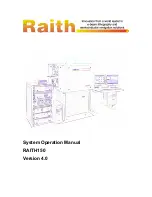
24
Care and Preventive Maintenance
Before every use
Make sure the battery is charged before use. If not
adequately charged, replace with a fully charged battery.
Where necessary, after each patient use, carry out
decontamination of the
Sara Plus
in accordance with this
IFU, and local regulations.
Daily
Make sure the battery pack is in a good state of charge.
Charge the battery at the end of each working shift, or as
soon as possible if the Battery Discharge Indicator
displays this and gives a audible warning. See
Battery
charging
in this IFU.
Make sure the Lower Override knob is turned fully
clockwise and is finger tight (do not over tighten).
Make sure that the sling attachment cords and the loop
lock assembly are visually inspected. Any component
found frayed or damaged must be replaced with a new
loop lock assembly.
Weekly
For longevity regularly charge battery/s until the charger
indicates full charge. See section “
Battery instructions”
.
General lift condition
A general visual inspection of all external parts should
be carried out, and all functions should be tested for
correct operation, to make sure that no adverse damage
has occurred during use.
• Make sure all castors rotate freely and the two rear
brakes lock. Where installed, make sure the Straight
Line Steering Guide locks the rear castor in line.
• Make sure the castor-mounting pin is tight on the
chassis and chassis legs and the castor tread is not
damaged
• Open and close the chassis legs and check for full
travel and smooth movement.
• Examine the condition of the handset and its cable.
Replace if damaged.
• Make sure all external fittings are secure, and all
screws and nuts are tight.
• Make sure the handgrips are secure, tighten if
required.
• Examine the integrity of the loop lock assemblies and
the knot within the cone knob.
• Make sure the screw retaining the front clevis pin in
the upper lift arm is tightened.
• Make sure the screws retaining the cord cleats in the
Arc-Rest are tight.
• Make sure all instruction labels are firmly attached
and are readable.
• Examine all exposed parts, especially where there is
personal contact with the patient’s body. Make sure
no cracks or sharp edges have developed that could
cause patient or caregiver injury or have become
unhygienic. Replace where necessary
• Make sure the foot support can be removed and
replaced and there is no damage to the hook and
location pins on the Foot Bracket assembly.
Automatic stop function
With the Arc-Rest raised well above its lowest position,
lower it, and at the same time hold the Arc-Rest up
briefly. The motor continues to run while the Arc-Rest
weight is held. This check is for the correct function of
the automatic stop.
Emergency stop
Test the emergency stop by operating the Arc-Rest.
Press in the emergency stop button.
(See Fig 2 on page 7 in section “Parts Designation”)
The movement should stop immediately.
Servicing advice
Parts lists and circuit diagrams are available from Arjo or
their approved distributors.
Spare parts, if required are available from Arjo or their
approved distributors.
Special tools are required for certain component
replacement.
Warning:
If in any doubt about the correct
functioning of the
Sara Plus
, withdraw it from
use and contact Arjo Service Department.
Warning:
Arjo recommend that the
Sara
Plus
is maintained at regular intervals, see
Preventative maintenance schedule in this
document.
Warning:
UK LIFTS ONLY: Important
legislation came into force on 5th December
1998, which has an impact on the schedule of
service for your patient lift(s), variable height
baths and other raising and lowering
equipment. The Lifting Operations and Lifting
Equipment Regulations (LOLER) 1998 and
The Provision and Use of Work Equipment
Regulations (PUWER 98) must be satisfied by
the duty holder. A scheme of six monthly
thorough examinations has been devised to
comply with the law and details can be obtained
from Arjo Service UK












































